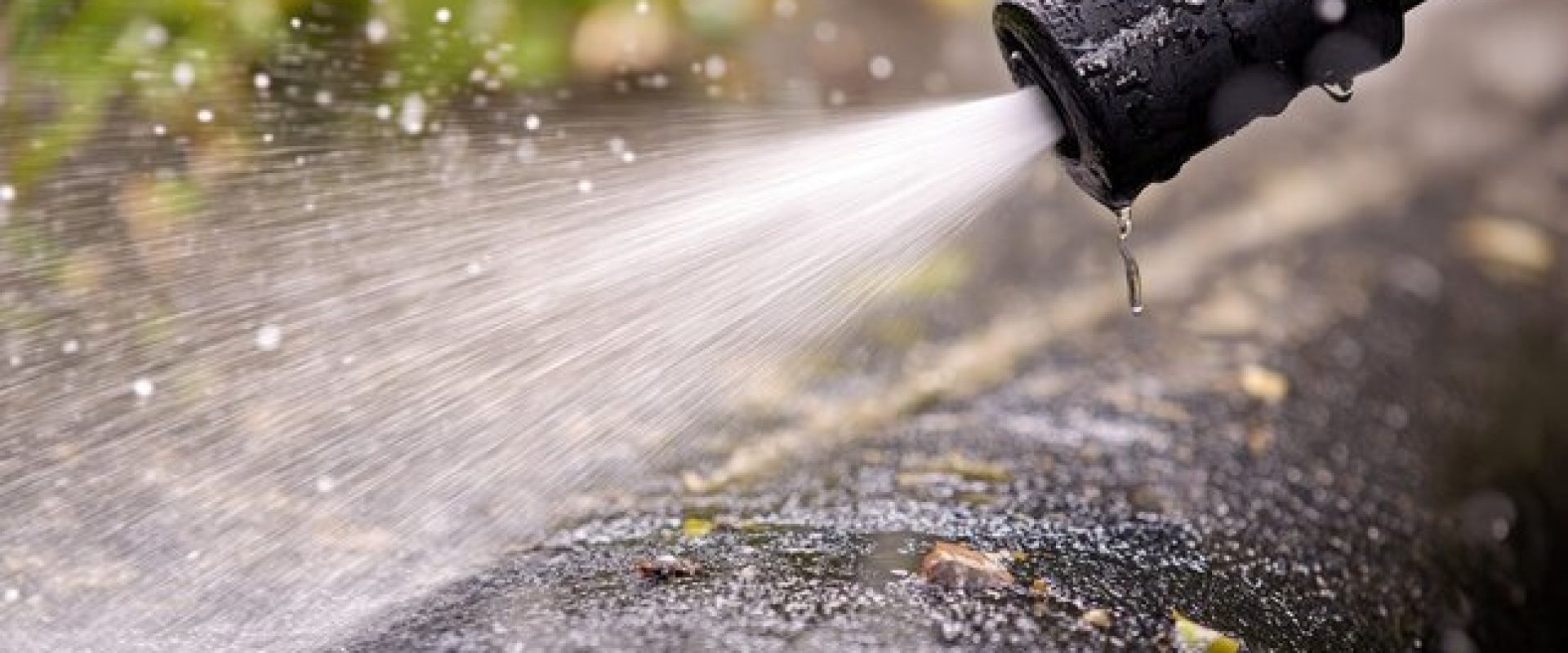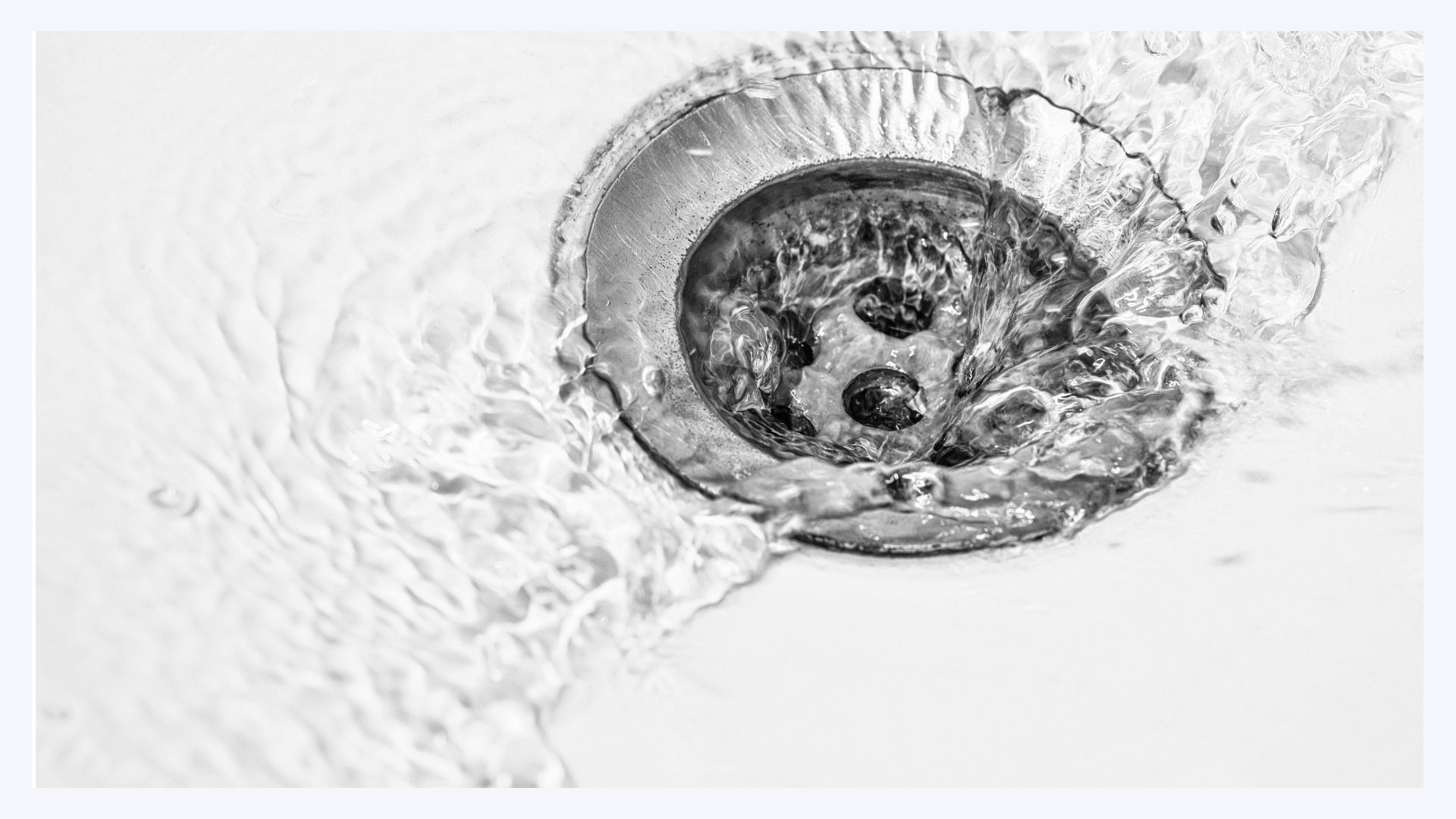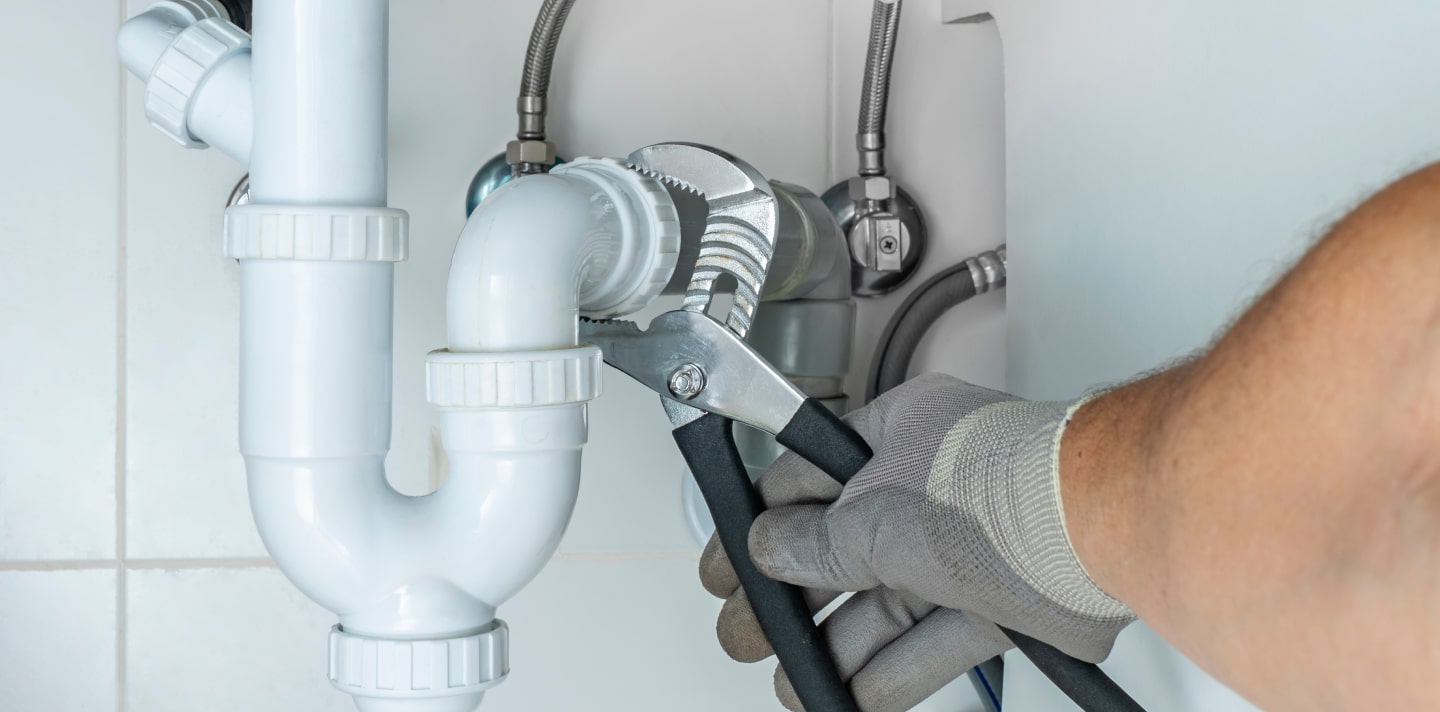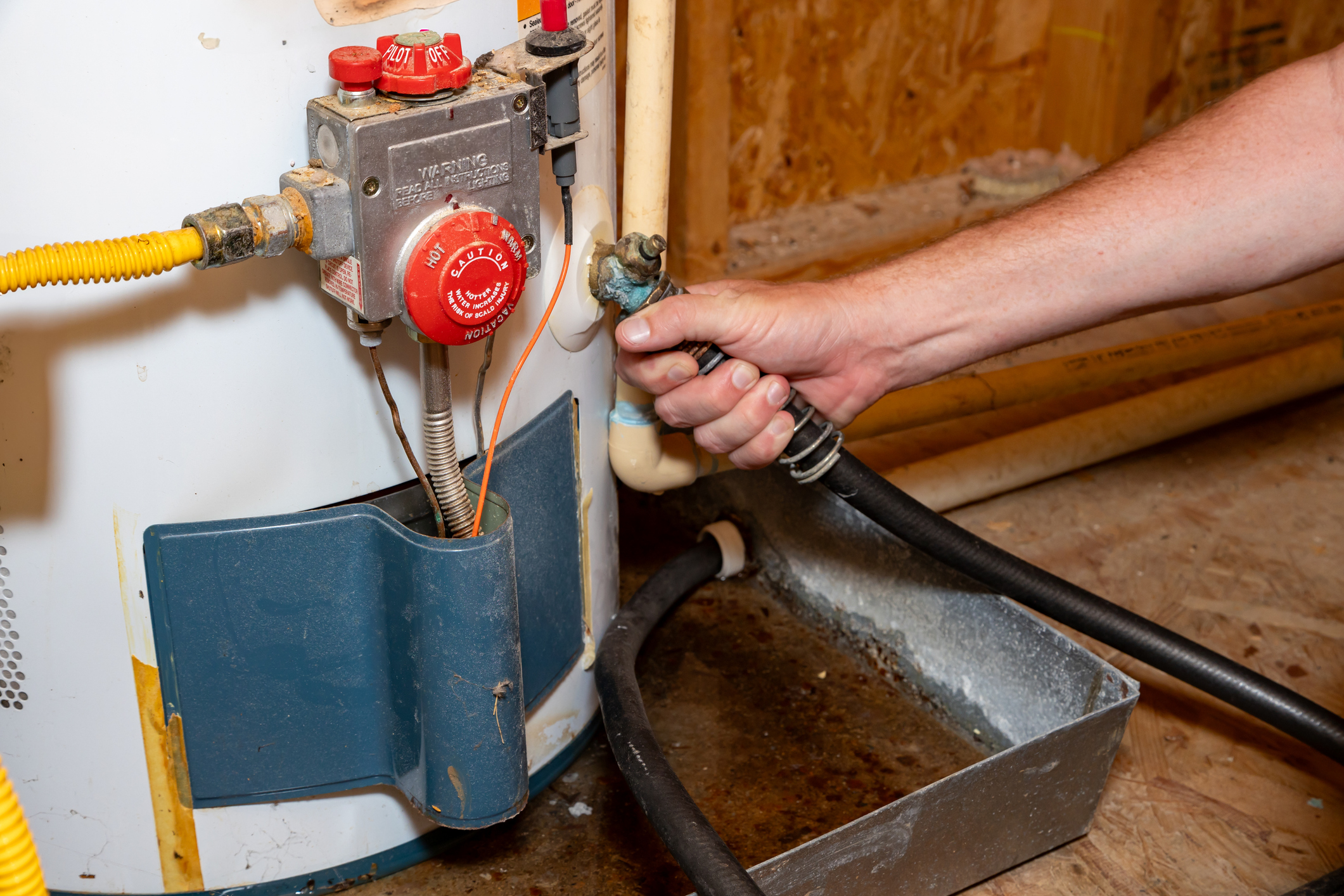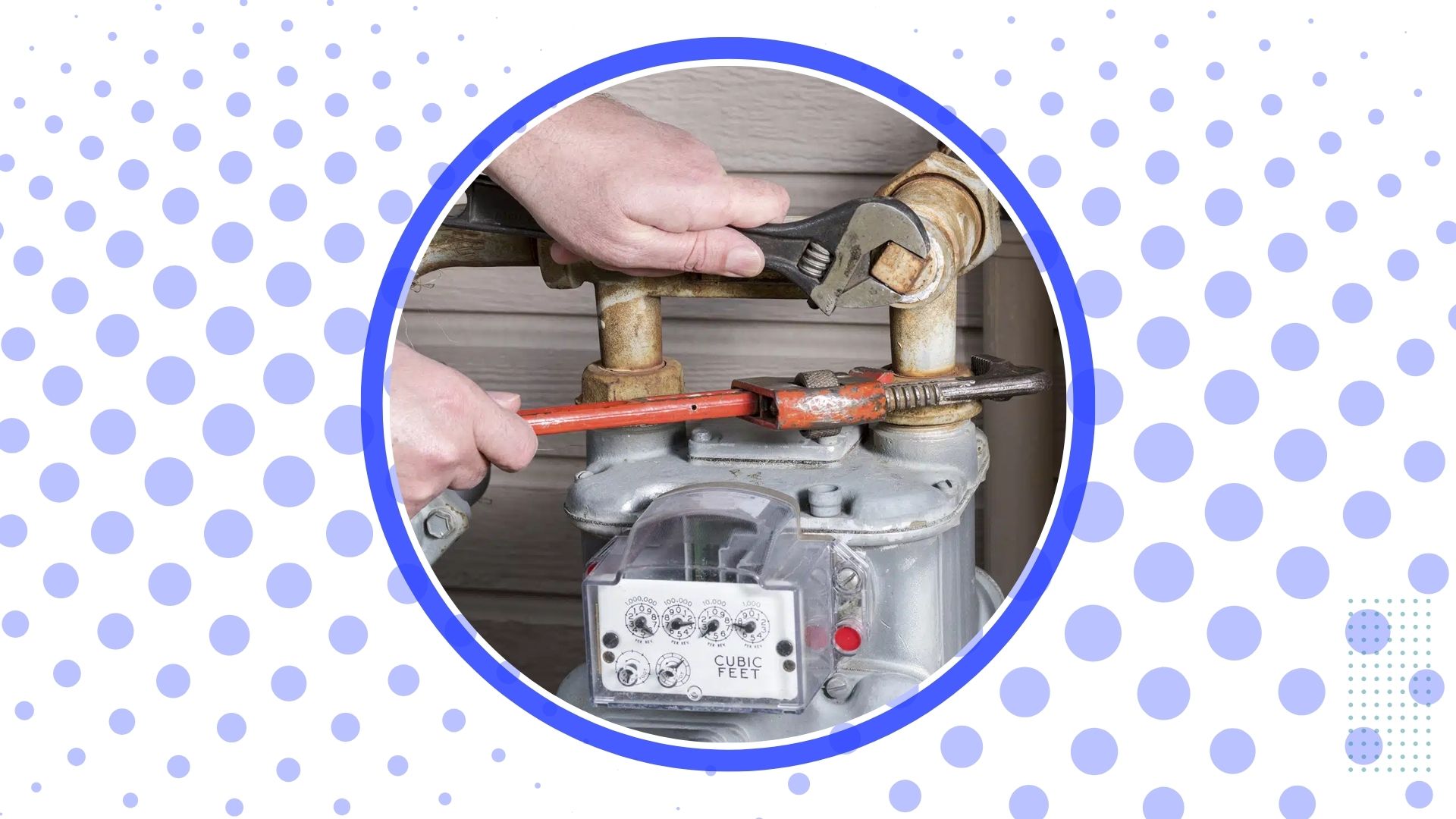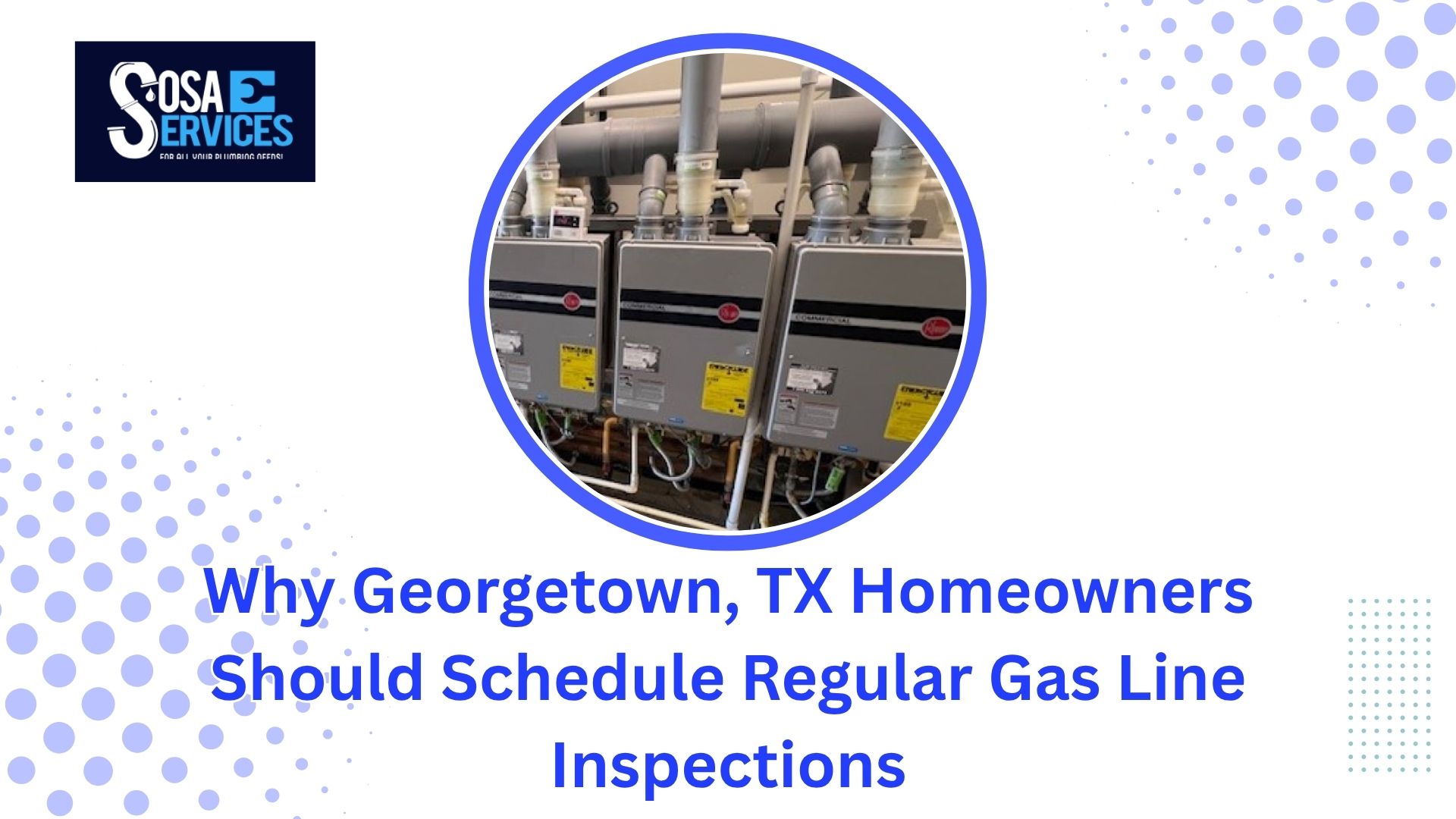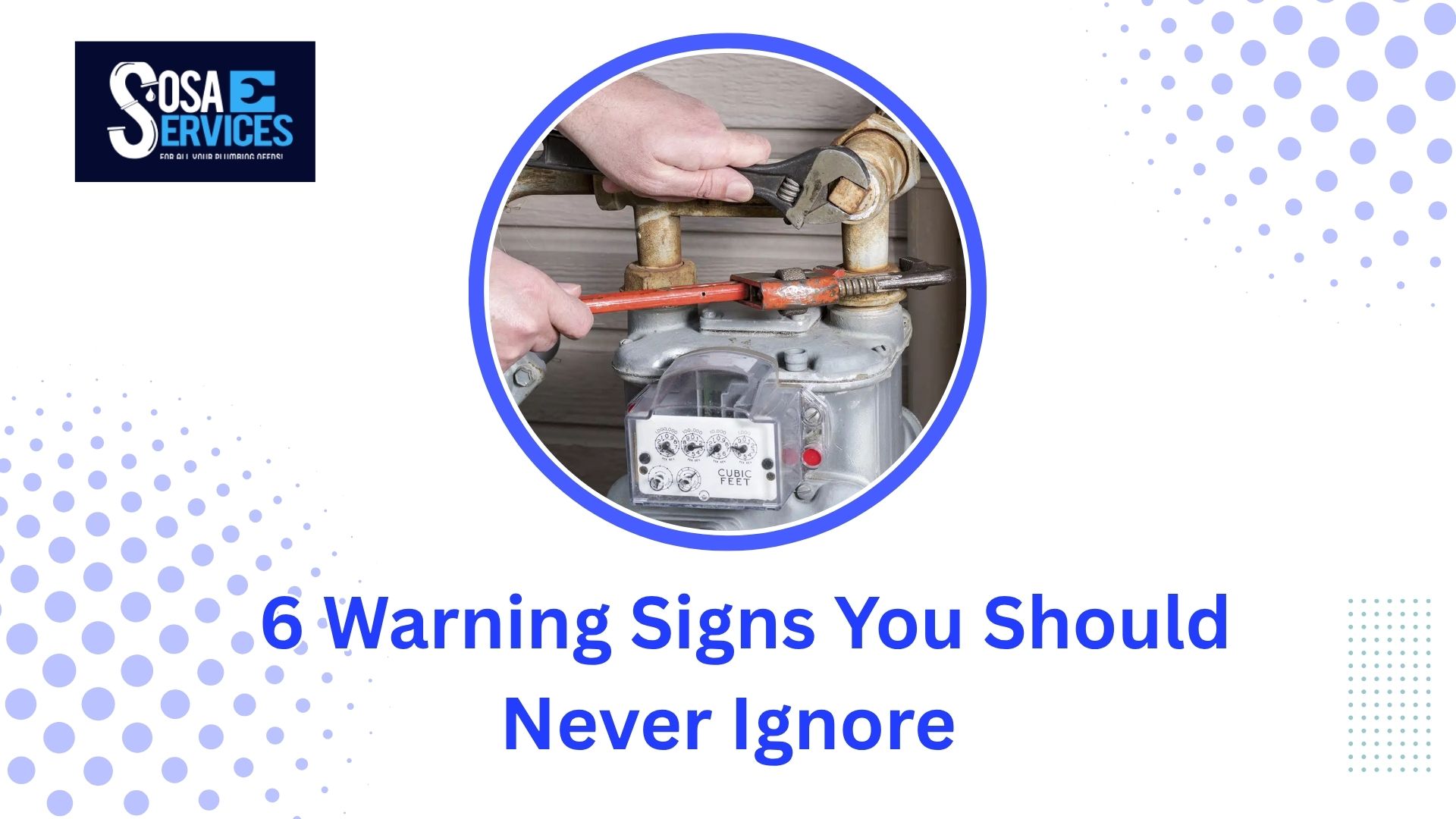Over time, you’ll need to decide between a drain snake and hydro jetting based on your clog’s depth and pipe condition: snaking is quick and low-cost for surface clogs but may not reach deep roots, while hydro jetting clears stubborn, deep blockages yet can damage older pipes and costs more—choose by severity and pipe age or consult a pro.
Key Takeaways:
- Drain snakes are cost-effective and good for minor, near-surface clogs but have limited reach and struggle with deep or root-related blockages.
- Hydro jetting clears stubborn, deep clogs and thoroughly cleans pipes, but requires professional equipment, is more expensive, and can damage pipes if pressure isn’t set correctly.
- Choose based on clog severity and pipe condition—use a snake for simple blockages and hydro jetting for recurring or severe obstructions; consult a plumber for the best option.
Understanding Clogged Drains
You’ll encounter clogs caused by different materials and pipe conditions, so method choice matters: consumer snakes typically reach 25–50 ft while professional cables extend to 100+ ft, and hydro jetting operates at roughly 1,500–4,000 psi to cut grease, roots, and scale. Ignoring a slow drain can escalate into sewage backups or pipe damage, forcing costly repairs instead of a simple service call.
Common Causes of Clogs
You most often face hair and soap scum in showers, kitchen grease and food particles in sink lines, and “flushable” wipes or paper products that bind into dense blockages. Older clay or cast-iron pipes develop joints that allow tree roots to infiltrate after 20–30 years, and hard-water areas see mineral scale narrowing diameters over time.
Symptoms of Clogged Drains
Slow drainage, persistent gurgling, foul odors, and water pooling are early signs; toilets that rise or tubs that fill when another fixture runs point to more serious issues. Multiple fixtures affected at once suggest a mainline problem—act quickly to avoid sewage backup.
Gurgling often means trapped air ahead of a partial obstruction, while intermittent slow drains indicate progressive buildup like hair or grease. If flushing one toilet causes another to bubble or backflow, you’re likely dealing with a mainline blockage that a snake won’t reliably clear; camera inspection can pinpoint depth and material so you pick between augering and hydro jetting.
Importance of Timely Drain Cleaning
Addressing clogs early saves money and limits damage: a typical snake service runs about $100–$350, hydro jetting averages $400–$1,200, whereas a full sewer replacement can cost $3,000–$15,000. Timely service prevents pipe corrosion, odor growth, and emergency backups that disrupt your home.
Scheduling preventive cleaning—annual for older homes, or every 1–3 years for kitchens with heavy grease—plus a $150–$600 camera inspection when symptoms persist, helps you choose the least invasive repair. Hydro jetting works well for recurring grease and root issues, while targeted snaking handles near-surface blockages quickly and cheaply.
Overview of Drain Cleaning Methods
You’ll find two broad categories: traditional manual tools and chemical fixes, and modern mechanical and high-pressure approaches. Drain snakes typically reach 25–100 ft and clear surface clogs quickly, while hydro jetting uses 1,500–4,000 psi water to remove grease, scale and roots. Expect one-off snake jobs to cost roughly $75–$250 and professional jetting $300–$1,000; older clay or damaged pipes face the highest risk from excessive jet pressure.
Traditional Methods
You’ll often try a drain snake, hand auger, or enzyme/chemical cleaner first. Snakes are effective for hair, soap and short-range blockages and can restore flow in 60–80% of minor clogs on-site. Chemical cleaners can burn through organic clogs but may weaken pipe joints and harm septic systems. DIY snakes cost under $100; professional rodding runs $75–$250 depending on depth and access.
Modern Techniques
Hydro jetting, CCTV inspection and motorized root cutters give you deeper, longer-lasting results. Hydro jetting strips biofilm, grease and intruding roots with pressures commonly between 1,500–4,000 psi, while camera inspections pin down blockage location and pipe condition before work begins. Expect professional inspection plus jetting to be the standard for repeat sewer clogs in Georgetown homes.
Opting for a camera-first workflow prevents unnecessary damage: you can confirm pipe material, joint condition and exact blockage type before jetting. Residential PVC is typically treated at under 2,000 psi, cast iron tolerates up to ~4,000 psi; technicians adjust nozzles and traverse speed accordingly. Case: a Georgetown townhouse saw full grease and tree-root remediation after a single 3,000 psi pass following a camera survey, avoiding a costly dig-up.
Comparing Effectiveness
You’ll find hydro jetting delivers the most thorough clean, often >90% effective on grease, scale and roots, while snaking wins for quick, low-cost fixes on near-drain clogs with ~60–80% success. Hydro jetting takes longer on setup but reduces recurrence; snaking is faster and cheaper but may leave biofilm and scale that causes repeat clogs. Choose based on pipe age, clog type and budget.
Below is a side-by-side comparison to help you decide.
Hydro Jetting vs. Drain Snaking
| Hydro Jetting | Drain Snaking |
|---|---|
| Best for grease, scale, roots and biofilm; often permanent when pipes are sound | Best for hair, soap, paper and surface clogs near the fixture |
| Typical cost $300–$1,000; requires pro and CCTV pre-check recommended | Typical cost $75–$250; can be DIY or professional service |
| Pressure 1,500–4,000 psi; adjust by pipe material; higher pipe risk if misapplied | Cable reach 25–100 ft; low-pressure, minimal risk to sound pipes |
| Longer setup, more thorough—reduces recurrence | Fast service for immediate relief; higher chance of repeat blockage |
What is a Drain Snake?
You use a drain snake — a long, flexible cable with a metal coil or head — to mechanically clear clogs by breaking them apart or pulling debris out. Handheld models run 10–25 ft; motorized machines reach up to 100 ft. Effective on hair, soap, and grease, a snake often fails against roots or fused scale, and can damage old or corroded pipes if overused.
Description and Function
Insert the cable into the drain and turn the handle or engage the motor so the head rotates, cuts, or hooks debris; typical sink jobs take 5–20 minutes. You’ll feel a snag when you hit a clog, then either pull it free or fragment it and retrieve debris. Snakes excel at clearing hair and grease but don’t remove deep root intrusions.
Types of Drain Snakes
Common types include the compact handheld (10–25 ft) for sinks, the drum auger for floor drains, the larger motorized cable for long sewer runs, and the curved closet auger for toilets. Each type targets specific clogs and pipe lengths, with costs from about $20 to over $1,000 for commercial units.
- Handheld — cheap, portable, best for kitchen and bathroom sinks
- Drum auger — enclosed cable, better for deeper household drains
- Motorized cable — powerful, reaches long sewer runs
- Closet auger — bent shaft designed for toilets
- Any root cutter — reinforced head for cutting tree roots
| Handheld | 10–25 ft; sinks and tubs |
| Drum auger | 25–50 ft; floor drains and laundry |
| Motorized cable | 50–100 ft; main sewer lines |
| Closet auger | Short, curved; toilets |
| Root cutter | Reinforced head; tree-root obstructions |
Manufacturers size cables by diameter (commonly 1/4″–1/2″) and offer interchangeable heads—cutting blades, corkscrews, and retrieval hooks—so you can match the tool to the clog. Rental shop motorized units typically charge $50–$120/day; purchase prices range from $20 for a basic handheld to $800+ for a pro-grade machine. Choose a cable diameter and head type based on pipe diameter and material to avoid pipe stress.
- Cable diameter — thicker cables resist buckling in long runs
- Interchangeable heads — blades vs. hooks for different clogs
- Power source — manual vs. electric affects reach and force
- Rental vs. buy — short jobs favor rentals; frequent use favors purchase
- Any pipe compatibility — verify material and age before heavy use
| Feature | What to check |
| Cable size | 1/4″–1/2″ based on pipe and job |
| Head types | Hook, corkscrew, blade—match clog type |
| Power | Manual for short runs; electric for deep lines |
| Cost | $20–$1,000+ depending on quality |
| Rental | $50–$120 per day for motorized units |
How to Use a Drain Snake
Put on gloves and eye protection, feed the cable into the drain until you hit resistance, then rotate the handle clockwise while advancing in 6–12 inch increments; when you feel the clog catch, pull back to retrieve debris or continue to break it apart, then flush with hot water. Avoid forcing the cable if you meet solid resistance to prevent pipe damage.
Work methodically: start with a short cable run to confirm you can reach the clog, use steady rotational pressure rather than jerking, and swap heads if the initial tool won’t bite. Typical removal takes 5–30 minutes; if the clog is root-related, hardened scale, or you encounter repeated kinking, stop and contact a professional to avoid causing a rupture or further pipe damage.
Advantages of Using a Drain Snake for Clogged Drains
Affordability and Accessibility
You can buy a basic drain snake for around $25–$150 or rent one for <$50/day, making it far cheaper than a typical service call of $100–$250; many hardware stores and online retailers stock both manual and motorized models. For quick, near-surface clogs you’ll often handle the job yourself in under 30 minutes, keeping costs low while avoiding scheduling a plumber. DIY access is a major budget advantage.
Immediate Results
Insert a snake and you frequently see flow restored within minutes for bathroom and kitchen clogs; handheld augers clear many hair and soap blockages in 5–15 minutes, while small motorized units often finish in 15–30 minutes. Emergency unblock scenarios commonly resolve on the first visit when the obstruction is within the reachable length.
Handheld snakes typically reach 6–25 ft and resolve about 70–90% of sink and tub clogs; motorized drums extend to 50–100 ft, cutting through compacted debris faster. Beware that metal coils can nick older cast-iron or corroded PVC, creating potential pipe damage, so you should stop if you meet extreme resistance and consult a pro.
Versatility for Various Types of Clogs
Drain snakes handle hair, soap scum, small food particles, and trapped toys effectively, with household units clearing these 60–90% of the time; they struggle with grease-packed lines and perform poorly on tree roots. Short, frequent clogs in sinks and tubs are ideal targets, and targeted mechanical action often prevents chemical exposure to your pipes.
- Hair — often removed by a few minutes of snaking.
- Soap scum — breaks up on rotation; may require repeat passes.
- Food debris — small solids come out or break apart.
- Small toys — can be fished out with hooked tips.
- Recognizing tree roots and severe grease requires professional hydro jetting or excavation.
| Hair | Cleared 70–90% of cases; fast (5–15 min) |
| Soap scum | Often needs multiple passes; moderate time |
| Food debris | Small solids removed or fragmented |
| Small objects | Can be retrieved with hooks or grabs |
| Tree roots/packed grease | Poor results; often requires hydro jetting or excavation |
Consumer cable lengths typically span 15–50 ft; pro cables reach 100–200 ft, so your ability to hit the clog depends on cable choice. You should match cable length and head type (corkscrew, cutting, or retrieval) to the blockage—use a cutting head for compacted hair bundles, a retrieval head for objects, and avoid aggressive cutting heads in older cast-iron to reduce the risk of pipe damage.
- Handheld auger — portable, best for common sink/tub clogs.
- Drum auger — higher torque for deeper household lines.
- Motorized cable — reaches 50–200 ft for longer runs.
- Cutting heads — effective on dense clogs but risk scratching pipes.
- Recognizing pipe material (PVC vs. cast-iron) guides head selection and pressure applied.
| Handheld Auger | Best: sinks/tubs; Length: 6–25 ft |
| Drum Auger | Best: household drains; Length: 25–75 ft |
| Motorized Cable | Best: long runs; Length: 50–200 ft |
| Cutting Head | Best: compacted debris; Risk: may abrade old pipes |
| Retrieval Head | Best: retrieving objects; Use when you can hook the obstruction |
Disadvantages of Using a Drain Snake
You’ll find drain snakes are affordable and effective for surface clogs, but they have clear downsides: limited reach, inability to remove long stretches of grease or biofilm, and poor performance against root intrusions. Home augers typically run 25–50 feet while professional cables reach up to ~100 feet, so deep or complex blockages often persist. Expect repeat visits if the snake only punctures or displaces material rather than fully extracting it, increasing long‑term repair costs.
Risk of Damage to Pipes
Using a snake on older or corroded lines—think cast iron or clay over 30 years old—or narrow 1.5–2″ drains can nick, scratch, or dislodge joints. Overly aggressive feeding or choosing the wrong head can worsen leaks or create fractures that require excavation or full pipe replacement, turning a cheap fix into a major repair.
Limitations with Severe Clogs
Snakes struggle with compacted grease, congealed sludge and especially tree roots; a cable may only bore a hole through roots without cutting them fully, leaving regrowth and recurring backups. Dense, repeated blockages in main lines often require hydro jetting or mechanical root cutters to restore full flow.
Hydro jetting cuts roots and blasts away the biofilm and grease coating pipe walls that a snake typically leaves behind, so failure to fully remove residues usually means clogs return within months. In municipal and long‑run residential mains, technicians report longer intervals between service after jetting versus snaking because the pipe interior is thoroughly cleaned, not just punctured.
Required Skill and Technique
Effective snaking demands you select the right cable diameter and head, control rotation and tension, and navigate traps and offsets; improper technique can compact a clog, break the cable, or damage seals. Professionals use inspection cameras to guide the auger—without that, you’re guessing at depth and cause, increasing the chance of incomplete clearing or damage.
Pro-level snaking often pairs a 1/4″–3/4″ cable choice and specific cutter attachments with CCTV to verify success; technicians typically need months of field experience to avoid common mistakes like over‑feeding or using excessive torque. Novice attempts frequently end in snapped cables or pushed‑through clogs that worsen the situation and require more costly follow‑up.
What is Hydro Jetting?
Hydro jetting uses pressurized water—typically 1,500–4,000 psi at 4–20 gallons per minute—to blast away grease, scale, roots and sludge that a snake can’t remove. You’ll often see full-flow restoration after a single service on long, root-blocked sewer lines. High pressure can damage aged clay, ABS, or poorly joined pipes, so professionals tailor pressure to your pipe material and condition.
Description of the Process
Technicians start with a video inspection, then insert a specialized nozzle and perform 1–3 passes while varying pressure and flow to cut roots and scour walls. You’ll have debris flushed downstream to the main sewer or collected if required. Final camera verification confirms clearance and reveals any pre-existing defects that could affect repair decisions.
Equipment Used for Hydro Jetting
Core equipment includes a high-pressure pump, hose reels and specialized nozzles—rotating root-cutters and fan-jets—mounted on a truck or portable unit, plus pressure gauges and a reel-fed hose that can reach 150–400 feet. You’ll also rely on a CCTV camera for guidance and post-cleaning confirmation.
Truck-mounted systems deliver the most power (often 3,000–4,000 psi at 10–20 GPM) for main sewers, while portable units provide lower pressure for indoor lines. Nozzle selection matters: rotating nozzles sever roots, rear-firing jets propel the hose, and forward-facing fan-nozzles scour walls. Operators must use PPE and inspect hoses regularly because a burst hose is a major safety hazard.
How Hydro Jetting Works
High-velocity water generates shear forces that erode and dislodge deposits from pipe walls; at around 2,000 psi and 10 GPM the energy can cut soft roots and biofilm, breaking material into flushable particles. You’ll typically see smoother pipe interiors afterward, which slows re-accumulation and reduces odors.
Operators commonly ramp pressure—starting low to avoid disturbing loose joints, then increasing for stubborn scale or roots—and finish with a low-pressure rinse. Pairing hydro jetting with pre- and post-CCTV is standard so you can verify results; never run maximum pressure without confirming pipe material, since that’s the leading cause of post-cleaning damage.
Advantages of Hydro Jetting in Drain Cleaning
Thorough Cleaning of Pipes
Hydro jetting delivers high-pressure water—commonly between 2,000–4,000 psi on residential jobs—to blast away grease, scale, sludge and biofilm that a snake only punctures. You get full-pipe cleaning that restores flow and removes the sticky residue that attracts future buildup; technicians report visibly clearer pipe walls on video inspections after a single pass, especially in kitchen and main sewer lines.
Eco-Friendly Method
Hydro jetting relies on only water, so you avoid pouring harsh chemical drain cleaners that damage pipes and create toxic runoff; this makes hydro jetting a far greener option for homes, apartments and businesses near municipal sewers or sensitive landscaping.
Using hydro jetting for maintenance often reduces your reliance on recurring chemical treatments, cutting cumulative chemical use over a year by a large margin. Jobs typically consume tens to a few hundred gallons of water depending on line length and severity, but that trade-off prevents repeated acid or lye treatments that can leach into soil and harm septic bacteria—helpful if you care about local groundwater or municipal-treatment loads.
Prevention of Future Clogs
Hydro jetting removes the root causes of recurring clogs—grease rings, mineral scale and compacted debris—so you experience fewer backups and longer intervals between service. You can schedule routine jetting every 12–24 months for high-use kitchens or tree-lined properties to keep flow rates high and emergency calls down.
Specialized nozzles not only clear deposits but also cut and flush small root intrusions, lowering the immediate risk of repeat blockages; note that roots can regrow, so pairing jetting with video inspections and a periodic maintenance plan offers the best long-term protection for your lines. Adjusting pressure for older or compromised pipes preserves integrity while maximizing prevention.
Disadvantages of Hydro Jetting
Hydro jetting delivers unmatched cleaning power but comes with trade-offs: higher upfront cost, a measurable risk of damaging weakened pipes at 2,000–4,000 psi, and the need for pre- and post-job inspections to avoid surprises in older Georgetown systems built from cast iron or clay.
Cost Considerations
Typical residential hydro jetting runs about $300–$800 for straightforward jobs, while complex mains or root remediation can exceed $1,000–$1,500. Expect to add a camera inspection fee of roughly $100–$300, so your total can climb depending on pipe length and access complexity.
Potential for Pipe Damage
Pressures used in jetting (commonly 2,000–4,000 psi) can scour scale and roots but may strip away corroded pipe walls or loosen old joints; vulnerable materials include aged cast iron, terra cotta clay, and heavily corroded fittings, making structural damage a real risk if the line is compromised.
Many operators lower pressure for fragile lines—sometimes to 500–1,200 psi—and perform a CCTV inspection first to check wall thickness and joint integrity. Removing a root mat or decades of scale can expose weak spots so severely that a short section collapses; contractors often patch or replace sections immediately after jetting in those cases, especially in Georgetown neighborhoods with 50+ year-old infrastructure.
Requires Professional Handling
Hydro jetters demand trained technicians who calibrate pressure, choose nozzles, and secure access points; DIY attempts can push debris deeper, void warranties, or create flooding. Expect a licensed plumber with proper PPE and containment procedures to handle the job.
Professional crews typically run a CCTV camera before and after jetting, use two-person teams for hose control and machine operation, and carry insurance to cover accidental damage. Improper setup—wrong nozzle, excessive pressure, or poor hose control—has led to backflow incidents and costly repairs, which is why experienced operators are standard practice.
Comparing Drain Snaking and Hydro Jetting
You’ll find a clear trade-off: a drain snake is fast and cheap for surface clogs, while hydro jetting eradicates deep buildup and tree roots but costs more and needs professional equipment; choose based on clog depth, pipe condition, and whether you want a short-term fix or a full-line clean.
| Drain Snaking | Hydro Jetting |
|---|---|
| Mechanical auger breaks and pulls localized debris. | High‑pressure water blasts grease, scale, and roots. |
| Best for sinks, tubs, and shallow soft clogs. | Best for main lines, recurring clogs, and heavy buildup. |
| Typical pro cost: $100–$300; DIY options cheaper. | Typical pro cost: $300–$800+, varies with line length. |
| Lower risk when used correctly; may not remove scale. | Powerful cleaning but risk of pipe damage if pipes are old or fragile. |
| Reach limited by cable length and bends. | Reaches deep runs and lateral branches with proper nozzles. |
Effectiveness for Different Types of Clogs
Snakes work well on hair, soap and small debris close to fixtures; hydro jetting removes entrenched grease, mineral scale and tree roots from mains and laterals. Any recurring blockage within months usually signals significant buildup that requires professional hydro jetting.
- Hair — snake
- Soap scum — snake
- Grease — hydro jetting
- Mineral scale — hydro jetting
- Tree roots — hydro jetting
Cost Analysis
Expect a drain snake call to run about $100–$300 from a pro, with DIY tools under $100; hydro jetting typically costs $300–$800+ depending on distance and severity, plus a camera inspection fee of around $100–$250.
Paying more for hydro jetting can eliminate repeat service calls—compare a one‑time $500 jetting versus multiple $150 emergency snake visits over a year. You should factor in inspection costs and potential pipe repairs if high pressure is used on weakened lines; contractors often recommend a pre‑jet camera scan to avoid expensive mistakes.
Long-Term Benefits
Hydro jetting restores near‑factory pipe interior, reducing future clogs and foul odors, while snaking gives immediate relief but rarely prevents reaccumulation; hydro jetting offers the strongest long‑term prevention for mains and grease‑prone lines.
For maintenance, many plumbers advise hydro jetting every 1–3 years for commercial lines and every 2–3 years for older residential mains—scheduling preventive jetting can cut emergency calls and extend pipe life, saving you hundreds annually compared with repeated spot snaking.
Situations Best Suited for Drain Snaking
You should reach for a drain snake when clogs are localized near fixtures and caused by hair, soap, grease or food debris. Hand augers (15–25 ft) handle most sink, tub and shower stoppages; motorized drum machines extend to 50–100 ft for deeper but non-root blockages. Snaking is fast, low-cost, often completed in under an hour, and avoids excavation—avoid using it on severely corroded or clay lines to prevent further damage.
Minor Clogs
You can clear most bathroom and kitchen backups caused by hair, soap scum or small food particles with a hand auger. Clogs within 5–10 feet typically respond within 10–30 minutes when you rotate and withdraw the cable, saving the average $100–$200 service call for simple fixes.
Homeowner DIY Projects
You’ll use a 15–25 ft hand snake for routine jobs, plus gloves, eye protection and a bucket. Insert, turn steadily to engage the head, then withdraw slowly to pull debris out; stop if resistance increases sharply to avoid pushing the blockage deeper.
Pick a snake diameter of 1/4″–3/8″ for bathroom lines and 1/2″–3/4″ for kitchen drains, and clean the cable after use with water and mild disinfectant. Do not run a snake right after pouring chemical cleaners—fumes and burns are possible—and halt if you hear grinding or feel a gritty catch that could indicate roots or broken pipe.
When to Call a Professional
Call a licensed plumber if multiple fixtures back up, sewage appears, persistent odors remain, or clogs recur more than twice in a month. Pros use camera inspection, motorized augers and hydro jetting to diagnose and clear deep or complex blockages that a hand snake can’t safely resolve.
Video cameras inspect main lines up to 200 ft, and hydro jetting operates at 2,000–4,000 psi to cut roots and remove grease; expect professional interventions to range from $300–$1,000 depending on scope. Seek help immediately for sewage backups, suspected collapses, or ongoing slow drains to prevent health hazards and structural damage.
Situations Best Suited for Hydro Jetting
Persistent and Severe Clogs
When you face recurring backups or blockages that return after snaking, hydro jetting excels at cutting through stubborn grease, sludge and root intrusions. Professional units typically run between 1,500–4,000 psi, letting you clear main sewer lines where snakes only reach a few feet; plumbers often resolve chronic municipal or multi-unit building clogs in a single service that previously required repeated augering.
Residential and Commercial Applications
Restaurants, apartment complexes and older single-family homes all benefit from jetting: commercial kitchens usually need service every 6–12 months for grease control, while many homeowners schedule preventive jetting every 1–3 years to avoid buildup in 3–6″ sewer mains. You’ll get faster flow restoration and longer intervals between cleanings compared with snaking.
Before you schedule jetting, insist on a CCTV inspection so the technician can confirm pipe material and condition; operators then match pressure to the line—PVC and thin-walled pipes need lower settings, cast iron tolerates higher force. Cost ranges widely, often about $300–$1,200 for residential jobs depending on access, line length and severity.
Pipes with Heavy Buildup
Hydro jetting removes years of mineral scale and compacted grease that snaking merely punctures or compacts; a rotating nozzle combined with high flow rinses deposits down to the pipe wall, restoring capacity and reducing odor. You’ll notice dramatic flow improvement in 3–6″ household and main lines after a single pass.
Technicians may perform multiple passes at graduated pressures to dissolve layered buildup without over-stressing joints; expect lower pressures for PVC (around 1,500 psi) and higher for durable materials (up to 4,000 psi). After jetting, a follow-up CCTV check should confirm near-complete removal and reveal any hidden defects that would make future jetting risky.
Best Practices for Maintaining Clear Drains
Adopt a mix of routine checks, simple daily habits, and periodic professional maintenance to keep lines flowing; schedule a camera inspection every 12–24 months, flush kitchen drains with 2–3 gallons of hot water weekly, and use strainers to cut hair and food solids by an estimated up to 80%.
Regular Inspections
Perform a quick visual check under sinks and around fixtures monthly for leaks, wet spots, or slow drainage, and book a video camera inspection if you spot recurring slowdowns or gurgling—camera diagnostics typically run $150–$400 and can reveal root intrusion or bellied sections before they cause sewage backups.
Preventive Measures
Install mesh strainers in showers and sinks, pour cooled grease into a sealed container for disposal, run enzyme-based cleaners monthly instead of caustic chemicals, and limit solids entering disposals to prevent buildup that leads to repeat clogs.
Use a simple maintenance sequence: scrape plates into the trash, run cold water while using the disposal, grind an ice cube monthly to clear blades, and flush drains with hot water once a week; homeowners with trees within 10–20 feet should monitor roots and consider a professional hydro-jet or root treatment every 2–5 years to remove 100%+ of fibrous buildup without harsh chemicals.
Professional Services
Call a licensed plumber if clogs recur after DIY attempts, if multiple fixtures back up, or if you detect sewage odor—basic snaking costs around $100–$300, while hydro jetting ranges from $300–$1,000 and is the best remedy for deep, stubborn buildup or root intrusion.
Expect a pro visit to start with a camera inspection to locate the problem, then recommend snaking, hydro jetting at controlled pressures (commonly 2,000–4,000 psi), or pipe repair/relining if damage exists; request written estimates, pipe-material confirmation, and any service warranties, and consider a scheduled maintenance plan if your property has older pipes or heavy usage.
When to Seek Professional Help
Identifying Severe Issues
Frequent backups in multiple fixtures, persistent foul odors, wet patches or a sagging lawn or sinkhole above your sewer line signal more than a simple clog; these often indicate tree roots, collapsed pipe sections, or a full sewer backup requiring camera diagnostics. If clogs recur more than three times in a month or you see sewage at cleanouts, call a pro for a camera inspection and scope report—these typically cost $100–$300 but prevent larger repair bills.
Avoiding DIY Mistakes
Many homeowners worsen problems by pouring chemical cleaners, forcing a snake through deep blockages, or renting high-pressure gear without training; mixing chemicals can create toxic fumes and damage seals, while over-aggressive snaking can score or dislodge old clay or cast-iron joints. If your attempt doesn’t clear the line within 20–30 minutes, step back and call a licensed plumber to avoid turning a repair into a replacement.
One common case involved a homeowner who used repeated caustic cleaners, then hired a jetting crew; the chemicals had weakened a corroded joint and the 2,000–3,500 psi jet dislodged it, causing a leak and a $2,800 repair. Ask about pipe material and age—pipes older than 40 years often need gentler methods—and avoid DIY jetters unless you’re trained; professional crews calibrate pressure to pipe type and use inspection video to confirm results.
Choosing the Right Professional Service
Pick a plumber who offers a camera inspection, liability insurance, and written estimates; typical service pricing runs $75–$300 to snake and $300–$1,000 for hydro jetting depending on line length and difficulty. Verify licenses, request before/after video, and confirm any warranties—shops that provide a 30–90 day clog warranty and documented pressure settings demonstrate accountability and experience.
Vet contractors by asking specific questions: “What maximum PSI do you use for residential lines?” (expect 1,500–4,000 psi ranges with lower settings for older pipes), “Can you show recent before/after camera footage?” and “Do you carry insurance and a written warranty?” Get at least two quotes, check local reviews, and prefer crews that include post-service camera verification in the estimate so you get documented proof the obstruction and any damage were addressed.
To wrap up
When it comes to clearing clogged drains, the right method depends on your situation. Snaking is quick, budget-friendly, and perfect for shallow clogs near sinks, tubs, and toilets. Hydro jetting, on the other hand, delivers a deep, powerful clean that tackles grease, scale, and intrusive roots, giving your pipes a longer-lasting solution. The key is understanding your pipe condition and clog severity—sometimes the simple fix works, while other times investing in hydro jetting prevents repeat emergencies and bigger repair bills.
At Sosa Plumbing Services, our licensed plumbers in Georgetown, TX specialize in both snaking and hydro jetting. We start with a thorough camera inspection to recommend the safest, most effective solution for your home. Whether you need a quick snake for a bathroom clog or a full hydro jetting to restore your main line, our team responds fast with transparent pricing and proven results.
Don’t let a stubborn clog slow you down. Call Sosa Plumbing Service today for expert drain cleaning in Georgetown, TX—and get your home flowing smoothly again.
